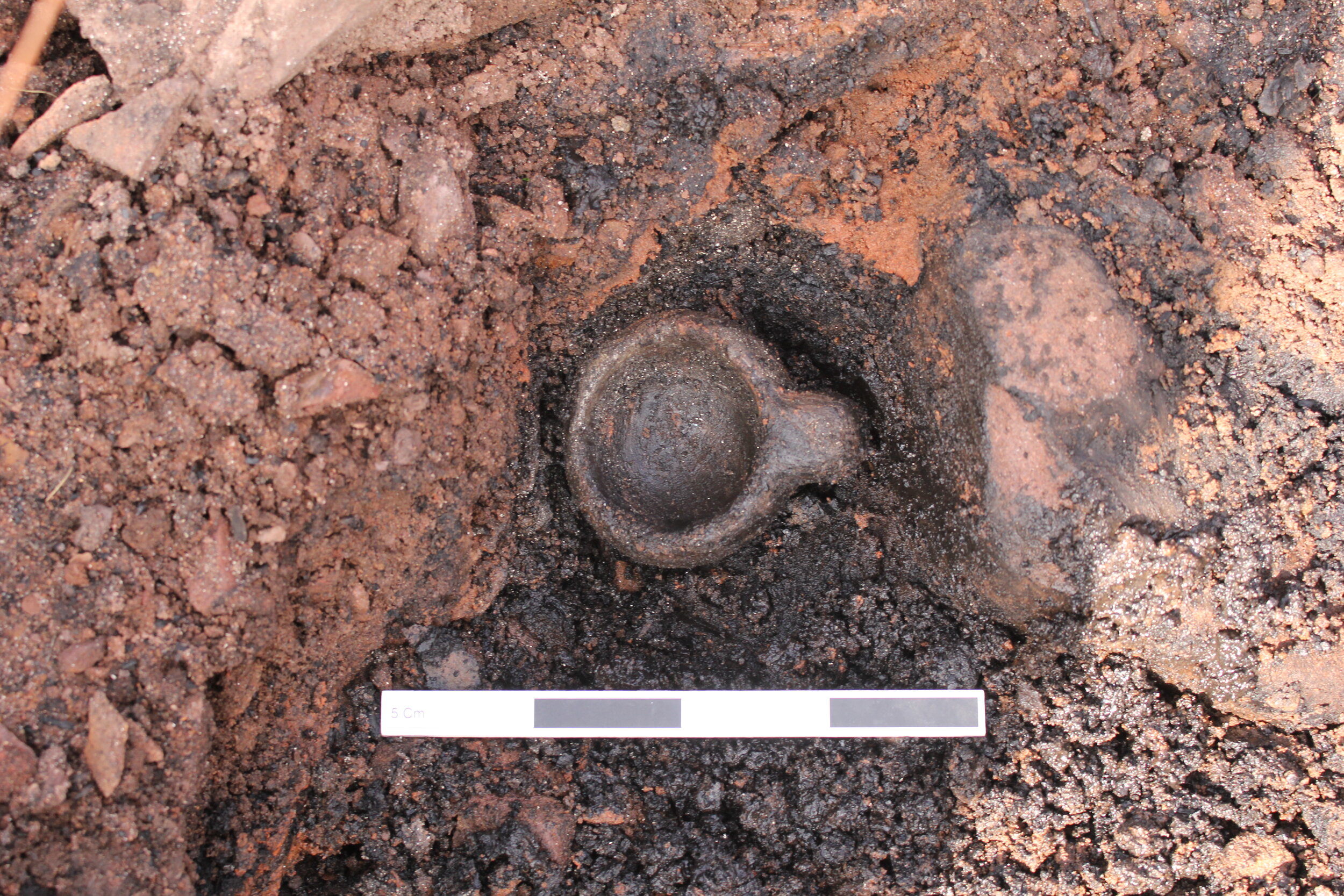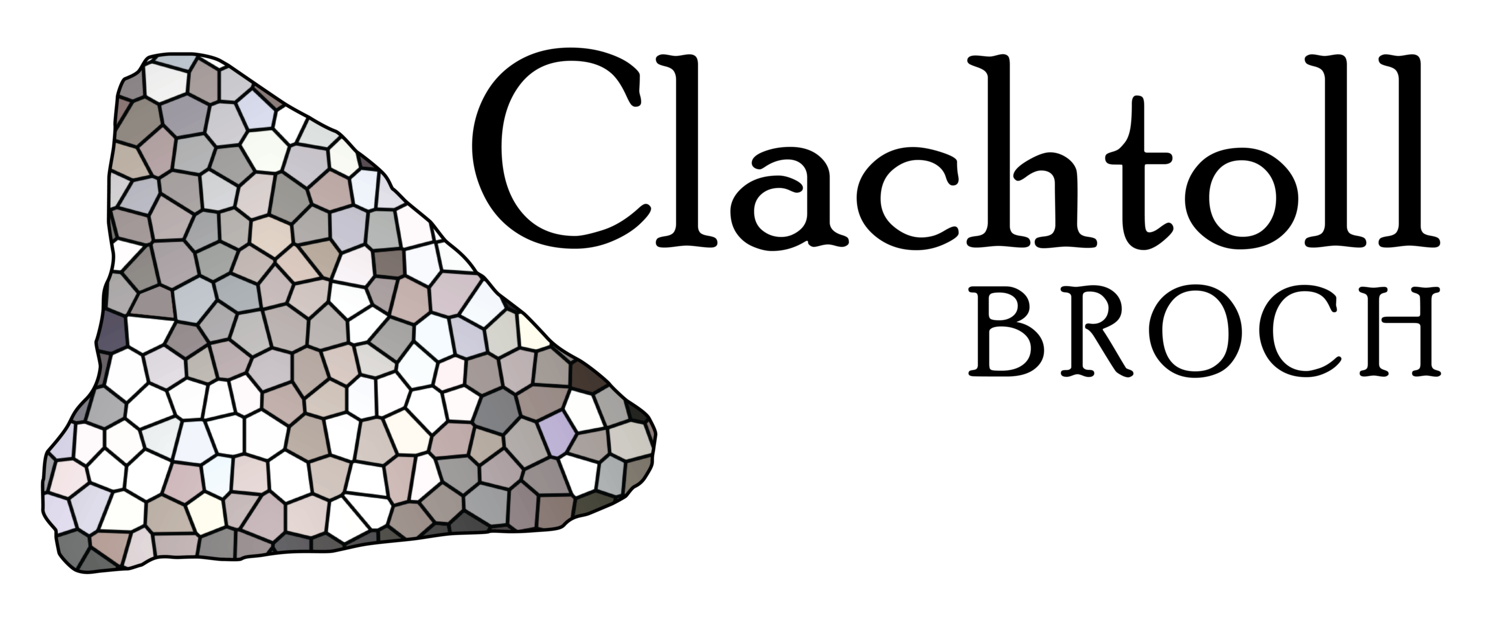
Tough and tactile, stone was used for a wide range of objects
During the Iron Age in Atlantic Scotland, stone was used not only as a building material, but also to make objects
Our excavations uncovered many stone objects used in a range of different spheres of everyday life at the broch
In the Kitchen
A number of the stone objects discovered within Clachtoll Broch were used in food production.
One of the most iconic finds at Clachtoll was the knocking stone, shown here. It was used to de-husk barley and was filled with partially processed barley grains, suggesting it was abandoned during use. The knocking stone remains in place inside the broch.
A group of quern stones, used in the processing of grain to create flour, was also found within the broch. A rotary quern is a type of quern formed from two circular stones, an upper stone that sits on top of a lower stone. Grain was poured into a hole (the feeder pipe) in the upper stone, which was then rotated to grind the grain.
Eight rotary quern stones were found at Clachtoll Broch and many of these showed signs of having been very well-used. Worn and broken examples had even been reused as paving stones. Most of the querns from Clachtoll Broch were made from locally available stone, but three examples are likely to have been imported from further afield, demonstrating the networks of trade and contacts enjoyed by those living in the broch.
One of the quern stones as discovered in the broch
A quern stone photographed back in the lab. The perforation at the left would have held a handle for turning the stone.
Close analysis of the feeder pipe in this quern stone shows where the surface has been smoothed during use
Lamp Light
Our investigations also uncovered a large number of bowl-shaped vessels made from steatite, a soft stone also known as soapstone.
These vessels are often found at Iron Age sites across Scotland, but the number found at Clachtoll Broch is unusually large.
Traditionally known as lamps, these vessels have a hollowed bowl with a handle projecting from one side. No two examples at the broch are the same, and this may be a reflection of the individual styles of those who made them.
The distribution of lamps within the site at Clachtoll, and the damage some of them sustained, suggests they were being used or stored on the upper levels of the broch when its structure collapsed.
This broken vessel features incised, linear decoration - a glimpse of Iron Age aesthetics
They were traditionally interpreted as lamps for giving light, and samples collected from two of the lamps show that they held a butter-like substance which might have been used as fuel. However, it is also possible that the butter-like substance could indicate that these vessels were used for other purposes. You can read more about the residue analysis here.









Stone Spindle Whorls
Spindle whorls are perforated disc-shaped weights used in the spinning of fibres into yarn. The presence of spindle whorls at the broch shows that the production of yarn was likely happening at the broch, and the discovery of a number of unfinished spindle whorls suggests that the whorls themselves were also being produced at the site.
Many of the whorls were decorated with incised radial lines, and occasionally grooves encircling the rounded edges.
Other stone tools found at Clachtoll Broch include: a whetstone, used for sharpening metal blades; two ‘strike-a-lights’ used for creating sparks to ignite fires; and a wide range of miscellaneous cobble tools used in a range of different activities such as food processing and hide preparation.
This delicate little bowl-shaped object is rather intriguing
It is plain except for a line incised just beneath the rim. We don’t know exactly what it was used for.












